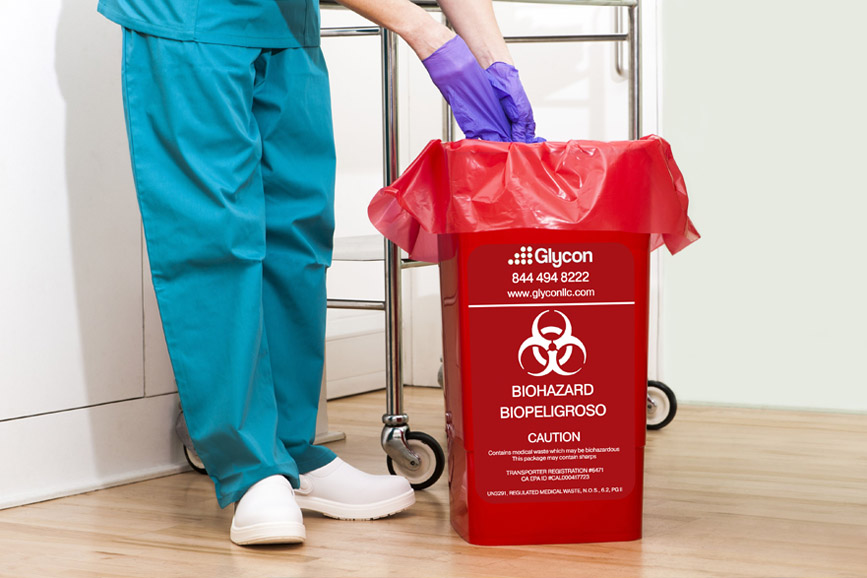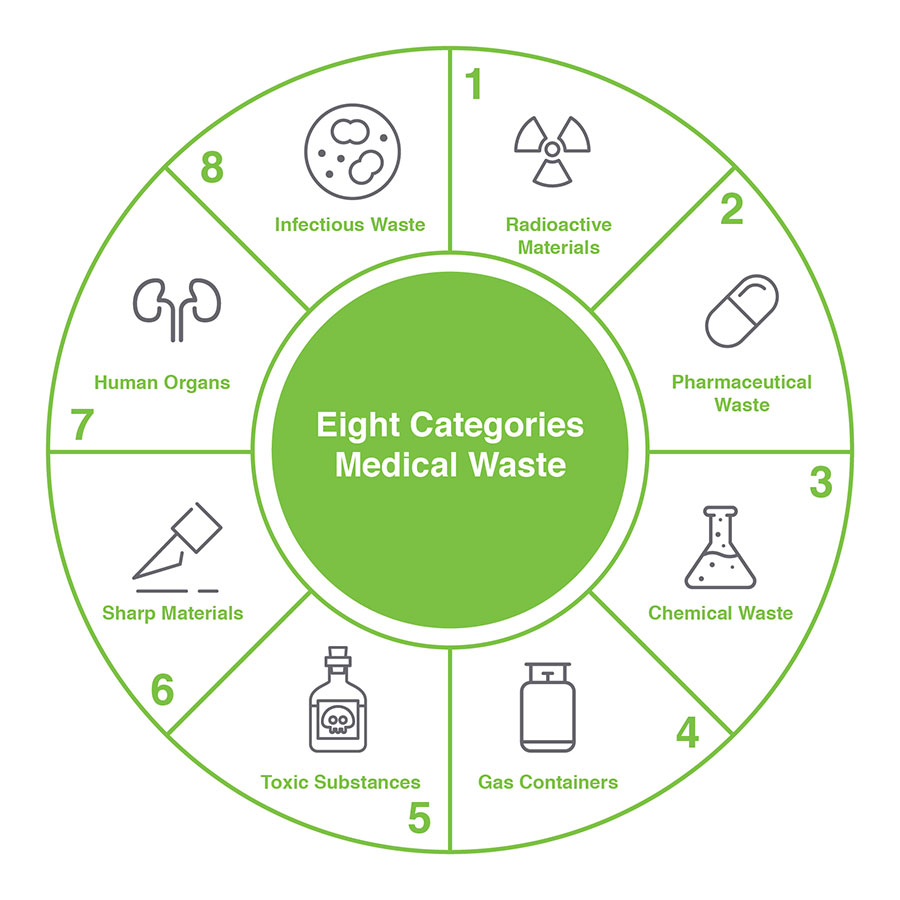Safeguarding Wellness: Professional Medical Waste Removal Services for a Clean Atmosphere
Safeguarding Wellness: Professional Medical Waste Removal Services for a Clean Atmosphere
Blog Article
Reliable and Eco-friendly Medical Garbage Disposal Solutions
In the ever-evolving field of health care, the concern of medical waste disposal stays a subject of critical relevance. As medical facilities, facilities, and other health care centers make every effort to give high quality patient care, they have to additionally resolve the obstacle of effectively and properly disposing of their waste.
Waste Partition Practices
Effective waste partition techniques are vital to ensure the safe and appropriate disposal of medical waste. Medical waste, that includes products infected with possibly transmittable substances, should be handled in such a way that decreases the threat of harm to both public health and the atmosphere. Appropriate waste segregation plays a crucial role in achieving this goal.
Waste segregation involves the separation of different kinds of waste based on their characteristics and potential risks. This process ensures that each kind of waste is treated and thrown away properly (medical waste disposal services with WasteX). It starts at the point of generation, where medical care facilities should have marked bins and containers for various waste classifications, such as sharps, contagious waste, pharmaceutical waste, and non-hazardous waste
By setting apart medical waste at the resource, medical care companies can prevent cross-contamination and lower the danger of direct exposure to contagious representatives. This practice additionally helps with the recycling and recuperation of specific products. Segregating and reusing tidy plastics and glass reduces the demand for raw materials and lessens the ecological effect of clinical waste disposal.

Autoclaving and Sanitation Techniques
In order to guarantee the risk-free and appropriate disposal of clinical waste following effective waste segregation methods, health care facilities need to use autoclaving and sanitation strategies. Autoclaving is an extensively made use of method that utilizes high-pressure steam to sterilize medical waste. This process involves placing the waste in a chamber and subjecting it to a combination of high temperature and pressure, which effectively eliminates microbes and provides the waste secure for disposal. Autoclaving is specifically efficient in disinfecting products such as surgical instruments, laboratory equipment, and particular sorts of clinical waste that can stand up to heats. medical waste disposal services with WasteX.
One more frequently used sanitation method is chemical sterilization. This entails treating the waste with chemicals such as ethylene oxide or hydrogen peroxide, which kill microorganisms by disrupting their cellular framework. Chemical sanitation is frequently made use of for heat-sensitive things or materials that can not stand up to the heats of autoclaving. It is crucial to keep in mind that chemical sanitation requires appropriate handling and disposal of the chemicals utilized, as they can be unsafe to human health and the environment if not handled properly.
On-Site Waste Therapy Equipments
Medical care centers have actually applied on-site waste therapy systems to resolve the disposal of clinical waste in a secure and reliable manner. These systems provide a affordable and practical service for managing medical waste created within the center. On-site waste therapy systems use various technologies to treat and get rid of of medical waste on-site, minimizing the demand for transport to off-site facilities.
One generally utilized on-site waste therapy system is the microwave innovation. Another system is the chemical sanitation technology, which entails treating clinical waste with chemicals to kill virus and decrease its unsafe nature. medical waste disposal services with WasteX.
They get rid of the danger of medical waste being messed up throughout transportation, decreasing the potential for contamination and direct exposure to unsafe materials. On-site treatment systems reduce the total ecological effect of medical waste by decreasing transport and the need for landfill room.
Recycling and Repurposing Initiatives
As medical care centers aim for sustainable waste administration practices, they are progressively discovering recycling and repurposing campaigns as a way of lowering the environmental impact of clinical waste. Reusing and repurposing campaigns involve locating innovative ways to reuse website here or change clinical waste right into new products or products. This not just assists to lessen the volume of waste that winds up in burners or garbage dumps however also reduces the intake of resources and energy required for making brand-new products.
One example of reusing in the health care industry is the reprocessing of single-use medical tools. These gadgets, such as surgical tools or catheters, are normally disposed of after a single usage. Nevertheless, developments in technology and rigorous sterilization processes have actually made it possible to securely clean, decontaminate, and reuse these devices numerous times. This not just reduces the quantity of waste generated however also conserves healthcare facilities substantial expenses connected with buying brand-new devices.
One more reusing initiative includes the recycling of plastic containers, such as medicine containers or syringe casings. These containers can be gathered, arranged, and sent out to recycling facilities where they are processed, thawed down, and changed into new plastic items. This aids to conserve resources and minimize the need for straight from the source virgin plastic manufacturing.
Along with recycling, repurposing efforts entail locating alternative uses for clinical waste. For instance, shredded paper waste from medical records or packaging materials can be repurposed as bed linen product for pets or as insulation product (medical waste removal services). Organic waste such as food scraps from health care facilities can be composted and utilized as fertilizer in gardens or agricultural fields.

Renewable Resource Solutions
One reliable approach to minimizing the official website ecological influence of medical care procedures includes executing renewable resource solutions. Medical care centers, such as facilities and healthcare facilities, take in significant amounts of power for different functions, including lights, home heating, cooling, and running clinical equipment. By transitioning to renewable power sources, these facilities can dramatically minimize their carbon footprint and add to a much more sustainable future.

Applying renewable energy options in medical care facilities not only decreases greenhouse gas exhausts yet also provides long-lasting price financial savings. While the first investment in renewable resource facilities might be greater, the lasting functional costs of renewable energy systems are considerably lower compared to conventional fossil fuel-based energy sources. Furthermore, eco-friendly power systems are trusted and can provide a continuous and steady power supply, guaranteeing constant health care services even during power outages or emergencies.
Conclusion
In verdict, carrying out efficient and eco friendly medical waste disposal options is important for maintaining a lasting medical care system. By embracing waste partition practices, autoclaving and sanitation techniques, on-site waste treatment systems, reusing and repurposing initiatives, and eco-friendly energy options, medical care facilities can dramatically reduce their ecological influence.
It starts at the point of generation, where healthcare centers need to have designated containers and containers for various waste categories, such as sharps, contagious waste, pharmaceutical waste, and non-hazardous waste.
In order to ensure the correct and safe disposal of medical waste adhering to reliable waste segregation methods, health care centers must employ autoclaving and sanitation strategies.Healthcare facilities have carried out on-site waste therapy systems to resolve the disposal of medical waste in a safe and effective fashion. On-site waste therapy systems utilize various technologies to dispose and treat of medical waste on-site, lessening the demand for transport to off-site centers.
As medical care centers make every effort for lasting waste monitoring techniques, they are significantly discovering recycling and repurposing campaigns as a method of reducing the ecological influence of clinical waste. - medical waste removal services
Report this page